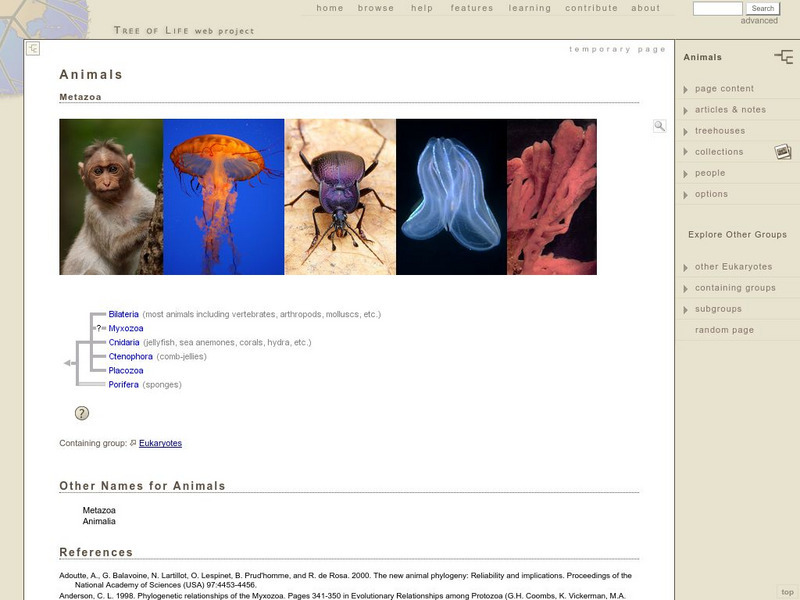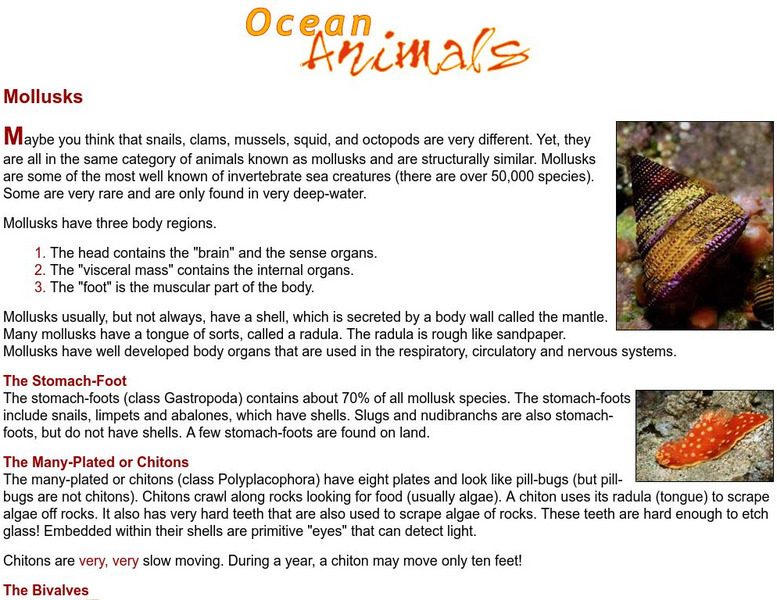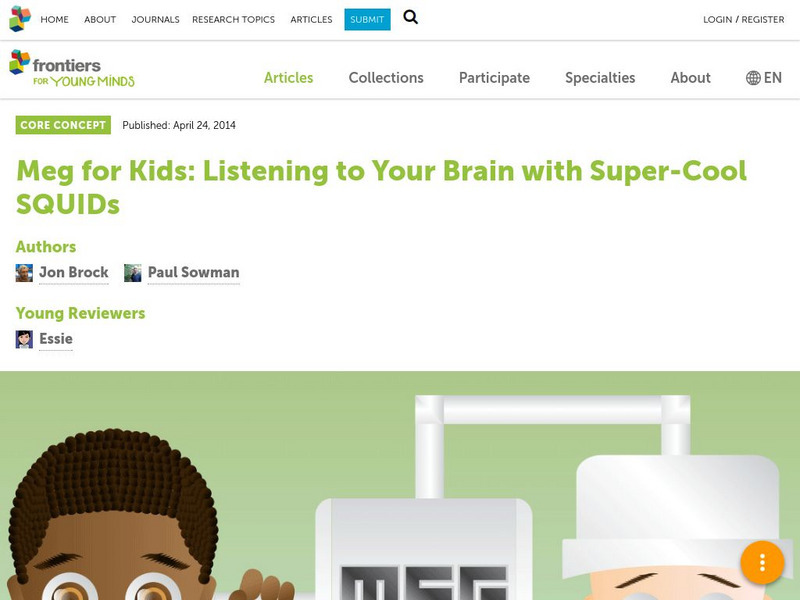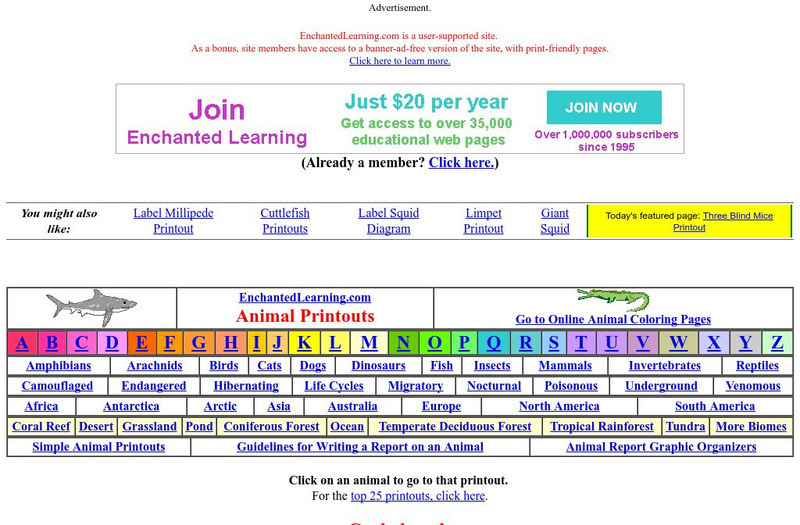Curated OER
Head to Foot
Students describe the body form and major anatomical structures of squids and describe some unusual or unique features of newly-discovered deep water squid species. They infer what types of food squids use from their anatomical features.
Other
Mollusca
A general description of mollusca and some discussion of those found in the waters of Great Britain.
Tree of Life Project
The Tree of Life Web Project: Animals
Extensive site that contains much information about the various animal phyla. Each phyla gives photos, common examples, scientific names and references. Collection of 1630 websites about bio-diversity.
Other
Native Planet: Dangerous Sea Life
Learn about venomous fish and other animals with the ability to inject venom, such as jellyfish and other venomous invertebrates.
Missouri Botanical Garden
Missouri Botanical Garden: Ocean Animals: Mollusks
The Missouri Botanical Garden describes the characteristics and natural history of mollusks in text and color photography.
Frontiers Media
Frontiers: Meg for Kids: Listening to Your Brain With Super Cool Squi Ds
Inside your brain, you have over 80 billion neurons - tiny brain cells, all working together to make you the person you are.Neurons talk to each other by sending electrical messages. Each message creates a tiny magnetic field. If enough...
Other
Sea and Sky: Mollusks
This illustrated article describes several different types of reef mollusks ranging form snails and clams to the chambered nautilus.
Enchanted Learning
Enchanted Learning: Cephalopods
This site provides links to elementary information about cephalopods. Students and teachers will find links to the blue ring octopus, the giant squid, the cuttlefish, octopus and more.
Australian Broadcasting Corporation
Australian Broadcasting Corporation: Monsters of the Deep: Tons of Tentacles
Read about octopuses and squids. Learn about their tentacles and other parts of the body.










